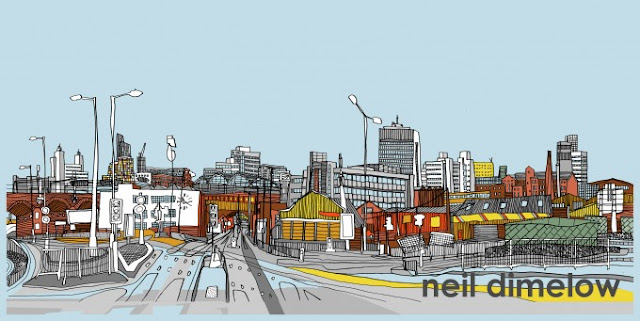Mood board inspiration from decor8
The most important reason behind constructing a mood board is to focus your thoughts. This can be done by really thinking about the theme of your project and then gathering items that will help you to visualise it. You can find inspiration in many different places ranging from the paint department at your local DIY shop and haberdashers to magazines and the internet. You can often find inspiration in your own home – raid those cluttered drawers and forgotten boxes in the garage! I often photograph things and places that interest me on my phone to use at a later date.
The mood boards on this post concentrate on two of the artists’ featured in my first post and the Built Environment 1 board on Pinterest.
Eve Broadhurst’s colour scheme for her ‘Belgium from the Rooftops’ set of illustrations uses pretty pastel colours reminiscent of ice cream and lollies. I have put together a collection of objects on Pinterest called ‘Ice Cream and Lollies’ that describes the colour theme and captures the atmosphere of her illustrations.
It is important to think about the theme creatively and not just focus on finding images of ice cream or lollies. In this photograph, I have gathered together objects ranging from a vintage cotton reel and old buttons to modern day washi tape. The objects all reflect the colour scheme that Eve has used and the one that I would like to use on a mood board inspired by her work. I have then placed the items on an old tablecloth that my grandma hand embroidered. I have also photographed pastel sweets on a white background. The photographs shown here could be used to add extra interest to your mood board.
Jessica Hogarth and a-side studio’s illustration uses areas of bright, block colour. Their designs remind me of confectionery and I have put together a board on Pinterest called ‘Sweetie Brights’ that is inspired by their work. Here, visual interest ranges from boiled sweets to stacks of coloured pencils.
Finally, make sure that you are inspired by the items that you are placing on your mood board. Be sparing with the use of text, take care over the composition and use samples to create additional interest (such as buttons, or scrabble piece or ribbon). Most of all, have fun putting it all together!
Examples of two pupils' mood boards inspired by Ice Cream and Lollies
Examples of two pupils' mood boards inspired by Sweetie Brights












